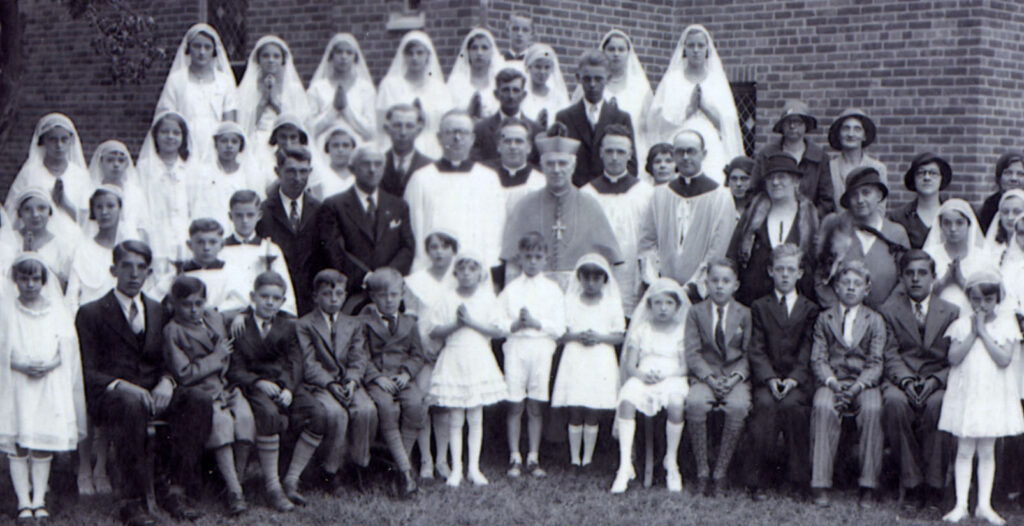BISHOP ANDREW J. BRENNAN
SOLDIERING FOR CHRIST
Easter could be called a “season of sacraments” because many of them are typically received, or more frequently celebrated, during the 50-day celebration of Christ’s resurrection: the baptism of adults and children, first holy Communion (Eucharist), confirmation, ordination (holy orders), and weddings (matrimony).
Each sacrament renews the Paschal Mystery — Christ’s passion, death, resurrection, ascension and the giving of the Holy Spirit — and applies the power of that saving event, in a specific way, to the recipient. In short, the sacraments “flow” from the pierced side of Christ (see Jn 19:34) into the liturgical rites of the Church (Catechism of the Catholic Church, no. 1115).
The understanding of confirmation for much of the history of the Diocese of Richmond was based on the Baltimore Catechism (1885), which, in turn, was based on the Catechism of the Council of Trent (1566), better known as the Roman Catechism.
According to the Baltimore Catechism, “Confirmation is a Sacrament through which we receive the Holy Ghost to make us strong and perfect Christians and soldiers of Jesus Christ” (Question 670).
Here, soldiering meant resisting worldly pressures in order to bear witness to Christ, strengthened by that sacrament (Roman Catechism, II, 3, 2 and 18). The Baltimore Catechism stated, “One may and should add a new name to his own at Confirmation, especially when the name of a saint has not been given in Baptism” (74).
Confirmation, like baptism and holy orders, impresses a “character” or mark on the recipient, meaning that these sacraments can never be erased or repeated (II, 1, 26). The age for confirmation, according to the Roman Catechism, was about 12, with the minimum being 7, the age of reason.
(The Roman Catechism stated that confirmation “may indeed be administered to all” regardless of age. However, it was “inexpedient” to confirm those below the age of reason, and so the sacrament was “deferred” or “postponed” until the prescribed age — an implicit acknowledgment that confirmation was originally conferred on infants [II, 3, 15].)
The Roman Catechism explained that the term “confirmation,” and the age at which the sacrament was usually received, should not be misinterpreted as somehow “confirming” one’s personal faith that had been involuntarily professed at infant baptism, which would reduce confirmation to the mere act of reaffirming one’s faith at a mature age (II, 3, 18). Still, this misunderstanding of confirmation lingered, even as it does today.
The ordinary minister of confirmation is a bishop (II, 3, 11). Like his predecessors and successors, Andrew J. Brennan (1877–1956), the eighth bishop of Richmond (1926–1945), administered confirmation across a vast territory.
At that time, the Richmond Diocese included the eastern panhandle of West Virginia. When the western counties of Virginia seceded during the Civil War and formed West Virginia (1863), the Diocese of Wheeling covered most of the new state as well as southwest Virginia, while the Diocese of Richmond covered the remainder of Virginia and the eastern panhandle of West Virginia.
The boundaries of the Richmond and Wheeling dioceses were finally reconfigured to coincide with state lines in 1974. At the same time the territory of northern Virginia became the newly formed Diocese of Arlington.
During his tenure, Bishop Brennan began a diocesan newspaper, the Catholic Virginian (1931), and opened two homes for children in need: St. Joseph’s Villa in Richmond (1931) and the Barry-Robinson School for Boys in Norfolk (1934). Brennan also led the diocese during the Great Depression (1929–1939).
He experienced a stroke in 1934 that left him unable to function as bishop. Peter L. Ireton of Baltimore was appointed coadjutor (meaning that he would automatically succeed Brennan as bishop) and administrator of the diocese (1935), although Brennan did not formally resign his position until 1945.
Editor’s note: Given the restrictions on public gatherings brought on by the coronavirus (COVID-19) pandemic, the celebration of confirmation has been suspended. Once public Masses resume, local pastors will confer the sacrament in their parishes.

